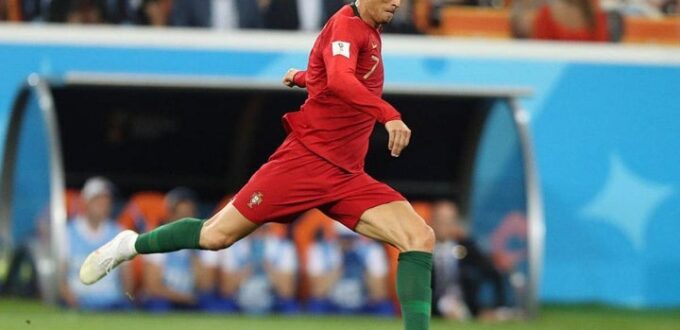This article was co-written by Giada Palma.
Cryptocurrencies are proving their strength, and the nearly $37 million for Ukraine collected over several days in the form of Bitcoin (CRYPTO: BTC) and Ethereum (CRYPTO: ETH) is yet another demonstration of the amazing power of alternative investments, which are enhanced with new use cases and potential applications.
The sports world has not let the momentum slip, with several soccer players gaining interest in cryptocurrencies.
See Also: Ukraine Receives $37M In Crypto Donations: What You Need To Know
A Short History of Crypto and Soccer: Among the first ties between cryptocurrencies and the world of soccer date back to 2018 when a Turkish team, Harunustaspor, signed Omer Faruk Kiroglu in Bitcoin. That same year, Pablo Victor Dana, the owner of Gibraltar United, chose to pay his players in Quantocoin and Rimini Football Club was the first club to allow the purchase of its shares in cryptocurrencies. Heritage Sports Holding bought 25% of the club in Quantocoin.
Lionel Messi Gets Paid in Crypto: The Paris St.-Germain striker signed a two-year contract last August (renewable for another year) with the French team owned by Qatar. The “welcome package” would amount to 25 to 30 million euros, a “significant” part of which would be made up of tokens, according to Reuters and Eurosport.
Luis Suarez Launches his NFTs — But He’s Not the First One: The Uruguayan superstar from Atlético Madrid announced the launch of his non-fungible token (NFT) collection last November. Suarez is one of the most popular athletes in the world with more than 42 million followers on Instagram and nearly 17 million followers on Twitter Inc (NYSE:TWTR). The NFTs were created by the Dutch studio Visual Lab and the auction of 30,000 NFTs on the Ethernity chain lasted 72 hours, where prices started at $50 each.
Suarez did not set the trend, but rather followed. In August 2021, Messi was the first soccer player to put his NFT collection on sale. The collection of digital stickers on Ethernity was designed by the Australian artist Bosslogic. “Man From Tomorrow” is on sale for $10,494.32; for those on a tighter budget, the lot 595/30,000 of “The Magician” is available for just $41.99.
Cristiano Ronaldo’s scores in tokens: The legendary Portuguese striker would be the first soccer player whose goals are compensated in cryptocurrencies, according to the Spanish newspaper Marca. Juventus awarded Ronaldo 770 of the Juventus Fan Token (CRYPTO: JUV) for the 770 goals scored during his career.
Fan tokens are an increasingly popular tool among clubs and are particularly suitable when it comes to distributing prizes and bonuses to fans and players. The value of the 770 JUV tokens would amount to approximately $4,958.80 based on the current JUV price of $6.44. It’s a drop in the bucket for a champion whose assets are estimated at around $500 million.
Ronaldinho signs an NFT partnership: Two weeks ago Brazilian champion Ronaldo de Assis Moreira, better known as Ronaldinho, announced the launch of his NFT series created in partnership with Graph Blockchain. NFTs also include special events and fan-exclusive experiences and fit into a larger context. In fact, Ronaldinho will be the world ambassador of New World, a platform owned by Graph Blockchain. Meanwhile, another Brazilian soccer player, Neymar, has reportedly bought the Bored Ape #6633 for a value of 159.99 ETH (approximately $471,170 at current prices).
What does the future look like? While athletes are gradually getting into the world of cryptocurrencies and NFTs, soccer clubs have become agents of change this past year. The COVID-19 pandemic has reduced the revenues of most clubs and these new forms of involvement are another way to recognize fans who are asking to actively participate in the success of their favorite team.
It will be interesting to see how the search for backers will change the relationship between ownership and fandom, and how sports teams will be able to exploit the opportunities of the metaverse in order to generate new revenues.
Photo: Fars Media Corporation via Wikimedia Commons

No Comments Yet